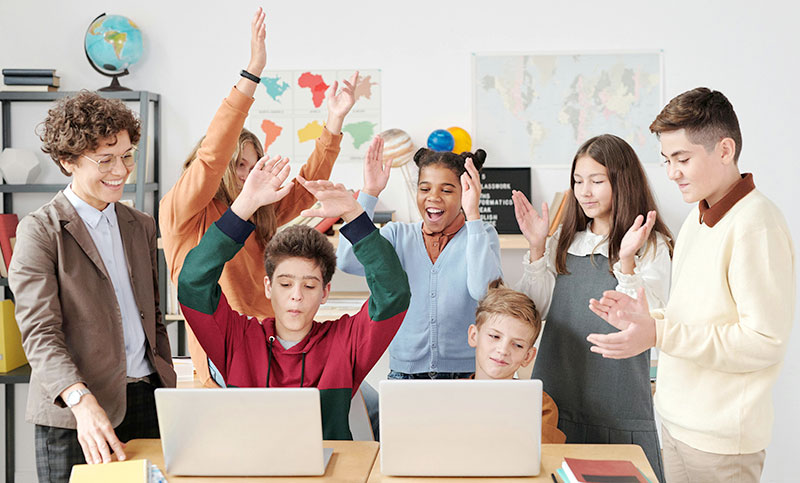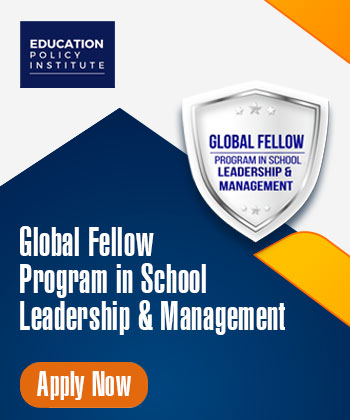Seven Transformative Innovations in K-12 Education
April 05, 2024These days, innovations are a part of our daily life wherein we scroll through at least two new innovations every week in various fields. K-12 education doesn’t stand alone, especially after the recent global pandemic. Technologists, innovators, and educators have found umpteen number of ways to make K-12 education engaging, efficient and effective. The entire shift to online learning and educating itself shows the immense opportunities and possibilities of innovations in K-12 education system.
In today’s world, the education industry is booming with prosperity with the advent of educational apps, online tutoring, online meeting applications, e-books, e-library and much more. There have been a continuous and tremendous growth in annual revenue in the education sector each year according to statistics and is expected to grow even more. So, in this article, we would be looking at some of the latest innovations in K-12 education sector.
Top 7 Innovations in K-12 Education

-
1. Virtual and Augmented Reality (AR and VR)
Virtual Reality (VR) and Augmented Reality (AR) are reshaping the educational landscape by introducing immersive technologies that elevate learning experiences.VR and AR are transforming education, offering immersive experiences like virtual field trips within the confines of classrooms.
Recent advancements have been providing realistic explorations of historical landmarks, oceans, and outer space within classrooms, enhancing comprehension and sparking curiosity in students.
Similarly, simulations powered by VR and AR bring abstract concepts to life enabling interactive learning of scientific, historical, and mathematical principles imaginatively.
Additionally, Interactive lessons in virtual environments promote participatory learning, accommodating diverse styles and at the same time fostering collaborative problem-solving.
-
2. Gamification
Gamification in education is a transformative approach that seamlessly integrates game elements and mechanics into conventional learning activities which enhances engagement through points, badges, and rewards.This innovation aims to stimulate active student participation and a heightened commitment to educational objectives.
Currently, educators utilizes gamification to monitor students' progress in real-time, offering personalized feedback based on individual needs.
Beyond motivation, it enables real-time progress monitoring, fostering essential skill development like problem-solving and critical thinking along with introducing a social dimension to education.
Significantly, the adaptability of gamification across various subjects and age groups makes it a versatile tool for educators, offering a dynamic and enjoyable learning experience.
Also Read: The Power of Gamification: Transforming Students’ Learning
-
3. Artificial Intelligence (AI) Integration
AI Integration in education is revolutionizing traditional teaching and learning methods by leveraging advanced technologies.Intelligent tutoring systems, a key AI application, is providing personalized learning experiences modelled to individual student needs. These systems adapt in real-time, offering targeted support and challenges to optimize comprehension.
Automated grading is another facet of AI integration which streamlines assessment processes, providing timely and consistent feedback to students bringing in effective teaching-learning process. Also, AI's data analysis capabilities enable educators to gain valuable insights into student performance trends, allowing for informed decision-making and targeted interventions.
Also Read: Empowering Educators and Learners: The AI Revolution in Education
-
4. Integration of Robotics and Coding
The integration of Robotics and Coding in K-12 education reflects a progressive shift toward developing students' computational thinking and problem-solving skills.Teaching coding is not only imparting a foundational understanding of programming languages but also cultivating logical reasoning and algorithmic problem-solving capabilities taking students to a much higher level than the previous generations.
Robotics further amplifies this experiential learning by providing a tangible application of coding principles. Students design, build, and program robots, gaining practical insights into engineering and automation.
The combination of coding and robotics prepares students for the demands of the digital age, equipping them with essential skills for future STEM (Science, Technology, Engineering, and Mathematics) careers and instilling a passion for innovation and exploration.
-
5. Integration of Social-Emotional Learning (SEL)
Social-Emotional Learning (SEL) Integration has emerged as a crucial component in K-12 education, acknowledging the significance of emotional well-being and interpersonal skills as an increasing trend in psychological issues are observed.SEL tools and programs aim to cultivate emotional intelligence, self-awareness, and interpersonal competencies.
Through curated curriculum and activities, students learn to manage emotions, build positive relationships, and make responsible decisions which grows a positive and inclusive learning environment, contributing to reduced stress and improved mental health outcomes.
Educators play a pivotal role in guiding students through SEL practices, promoting empathy, resilience, and effective communication leading to emotional resilience and social adaptability for a well-rounded life.
-
6. Online and Blended Learning Models
Online and Blended Learning have witnessed continuous advancements, revolutionizing traditional education models. These approaches leverage both synchronous and asynchronous tools, offering students unprecedented flexibility and accessibility.In the online realm, students can engage with course materials at their own pace, breaking away from the constraints of traditional classrooms.
Ath the same time, blended learning seamlessly combines virtual components with traditional face-to-face interactions, creating a dynamic and versatile educational experience bringing in a drastic change in K-12 education.
Technological tools, such as video conferencing, discussion forums, and interactive content, enhance student engagement and collaboration and the evolution of Learning Management Systems (LMS) further streamlines course delivery and assessment. This innovation not only caters to diverse learning styles but also prepares students for a digital-centric future.
-
7. Digital Content Libraries
Digital Content Libraries represent a transformative shift in K-12 education, providing an extensive repository of digital resources to enhance teaching and learning.These libraries house a diverse range of educational materials, including e-books, interactive simulations, videos, audio books and assessments.
Teachers can curate and customize content to align with specific curriculum objectives, crafting lessons to meet the individual needs of students.
The advantage is that, students benefit from interactive and multimedia-rich content, catering to various learning styles and the accessibility of these libraries promotes anytime, anywhere learning, empowering students to Interact with learning resources at a self-determined speed.
As schools increasingly embrace digitalization, digital content libraries play a pivotal role in creating dynamic, engaging, and personalized learning experiences for both educators and students.
Conclusion
In summary, the innovations in K-12 education highlighted above signify a profound shift in the traditional educational paradigm. Ranging from the immersive realms of Virtual and Augmented Reality to the engaging gamification strategies, these advancements address diverse learning preferences and cultivate a dynamic learning milieu. The infusion of Artificial Intelligence individualizes learning experiences and simplifies assessment procedures, while Robotics and Coding instill vital skills for future STEM careers. Social-Emotional Learning (SEL) recognizes the significance of emotional well-being, fostering a positive and inclusive learning atmosphere. Online and Blended Learning models introduce flexibility and accessibility, and Digital Content Libraries mark a pivotal move towards dynamic, captivating, and personalized learning journeys. As education undergoes continuous transformation, these innovations stand as key drivers in molding a generation well-equipped with essential skills for success in the ever-evolving digital era.
Latest
Trends blogs
- The Next Wave: Emerging Trends in E-Learning by 2025
- The Role of Gamification in Education and Learning
- Artificial Intelligence: The Influence on Academic Frontiers
- Cybersecurity In Education: Building Resilient Institutions
Focus blogs
- Hybrid Learning Essentials: Preparing Students for the Future of Education
- Enhancing Learning Outcomes: Strategies for Achieving Academic Excellence in Students
- Building a STEM-Driven Future: Strategies to Enhance Educational Engagement
- The Need for Competency-Based Learning in Higher Education Institutions




